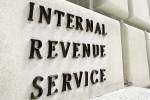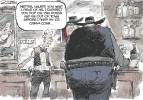Tesla to put strain on Nevada in short term

The $5 billion Tesla battery factory deal sealed by Gov. Brian Sandoval and approved by a special session of the Legislature is a high-risk, high-reward project that could be a turning point for both the electric car company and Nevada as the state diversifies its economy and establishes itself as a leader in green energy.
But in the short term during the construction phase and with the planned hiring of 6,500 permanent workers, Tesla will put a strain on Northern Nevada where it will be built — from schools and roads to police and fire protection.
The same thing happened in Southern Nevada in the go-go years before the Great Recession. Public services couldn’t keep up with the influx of new resident workers and their needs — and never really has caught up.
That concern was expressed by more than one lawmaker late Thursday as the deal was finalized, particularly as it relates to public school funding. The Tesla deal includes $7.5 million a year for five years from the company for public education beginning July 1, 2018, but it is not expected to cover all the demands on the school system as the Gigafactory ramps up over the next four years. The money could be spread statewide and won’t go very far.
State Sen. Tick Segerblom, D-Las Vegas, in comments on the Senate floor, said growth does not pay for itself. Businesses need to be forced to pay more, and he advocated for the passage of the margins tax on the November ballot to raise money for public education.
Lawmakers will rush to the capital on three days’ notice to give away $1.3 billion in tax incentives and burden the Washoe County School District but they won’t spend a nickel on education, Segerblom said.
“This body is incapable of raising the taxes the state so desperately needs,” he said. “That’s why the education initiative on the ballot in November is so crucial to the state of Nevada. Without it, we will be in the same hole year after year.”
State Sen. Ben Kieckhefer, R-Reno, countered that the project is expected to generate $1.9 billion in state and local taxes over 20 years even after the incentives have been taken into account.
“We’re not picking winners and losers,” he said. “Everyone in the state of Nevada is winning today.”’
With the deal freshly inked, Silver State leaders were singing its praises last week after the Legislature took two days to approve four bills that provide $1.3 billion in tax breaks, credits and electricity discounts to Tesla over 10 to 20 years. Sandoval predicted Nevada will reap a $100 billion economic impact during those two decades.
“It doesn’t get any bigger than this,” Sandoval said at the Thursday night signing ceremony with lawmakers packed in his office. “This is some of the most important legislation that’s hit this state in perhaps our history. We have changed the trajectory of this state, perhaps forever.”
“Nevada has announced to the world that we are ready to lead,” the Republican governor added.
The special session was the final action needed to bring months of private negotiations by state officials to fruition.
Tesla officials monitored the special session but did not publicly engage in the process.
RISK VERSUS REWARD
The few who criticized the deal questioned the economic assumptions used by the state to support the project and suggested the potential upside was not worth the risk. But others, pointing to the potential sea change event on the future of Nevada, argued just the opposite: that the state could ill afford not pushing forward.
Ultimately, all 60 members of the Legislature voted for the deal, although several lawmakers said they will likely see some sleepless nights as the project takes shape.
Issues of education funding, job training and other needs that the project will require were all pushed off until the regular legislative session that starts in February.
That includes a discussion of what to do about the $70 million in tax credits lost by the film industry as part of the Tesla deal, one element that rankled several Southern Nevada lawmakers who viewed it as a sacrifice for a Northern Nevada project.
State Sen. Ruben Kihuen, D-Las Vegas, said every decision made by the Legislature carries risk. But the technology being created by Tesla is the future for the world, he said.
“That’s why I am confident that moving forward this is going to be a successful project, and it is going to create jobs and it is going to be an economic stimulus for the state,” Kihuen said.
Danny Thompson, who heads up the Nevada State AFL-CIO, said the project is worth the risk as well although he unsuccessfully sought to require the prevailing wage to be paid to workers who build the 5 million-square-foot factory. He will try again in 2015.
“Clearly this is our opportunity to diversify our economy like none other that we’ve ever had,” Thompson said. “Anytime you give away this much money it’s a risk. When we started building Echelon in Las Vegas, it looked like it was going to be the end-all be-all, but it got part way out of the ground and stopped. So we know what that looks like.
“Clearly we have a leg up here. I believe the electric car industry is going to be the car of the future.”
GIGAFACTORY DEFIES IMAGINATION
The scope of the Tesla project, in which the electric car company will build the world’s largest battery factory in the Reno-Tahoe Industrial Park in Storey County east of Reno, dwarfs Nevada’s previous clean energy developments. The project includes partners, including Panasonic Corp., which will share in the tax incentives with Tesla.
Billionaire entrepreneur and Tesla Chairman and CEO Elon Musk has set a goal for Tesla to eventually sell at least 500,000 electric cars and supply stationary battery packs to store power from solar panels for homes and businesses.
U.S. Sen. Harry Reid, D-Nev., who has led an annual clean energy conference for seven years, noted that in 2007 he “could count on one hand the number of clean energy projects in Nevada — and they were just as small in size and production.”
“Seven years later, our state has seen more than $6 billion in solar, wind and geothermal investments and we continue to grow,” Reid said in a statement after the Tesla deal was completed.
“Today is a historic day in Nevada,” Reid said. “It is a result of many years of developing our state’s renewable resources so that the nation and world saw Nevada as an innovator in energy technologies. … The next phase of Nevada’s innovative energy future has begun.”
Reid played a role in helping Sandoval seal the deal with Musk, who was the keynote speaker in 2012 at the senator’s clean energy conference in Las Vegas. The governor asked Reid to speak with Musk while Nevada was competing with several other states for the project and he did.
The Gigafactory is a big bet for Tesla, too. The major tax break legislation that was approved requires the company to make a $3.5 billion investment in Nevada over 10 years to receive the generous incentives.
So far, the company has not been profitable and it must mass produce batteries at a cheaper price in order to become more competitive and lower the price of its cars. Now, the electric cars start at $69,000 and go up to $93,400.
Musk said the planned Gigafactory, which already has broken ground, is a vital piece of the company’s plans to build a mass-market affordable electric car, which he said is projected for release in about three years at a cost of about $35,000. It would have at least a 200-mile range, Musk said.
CALCULATED RISK
Eric Herzik , a political science professor at the University of Nevada, Reno, lauded the Tesla project despite the costs and the fact that the company has survived partly thanks to federal loans.
“Tesla is certainly a worthwhile risk for the state,” Herzik said. “The ‘high risk’ is if Tesla is a bust.
“If the cars don’t sell and Tesla is unable to make a profit, many of the economic impact projections will not materialize,” Herzik explained. “On the other hand, if Tesla succeeds then Nevada gets a massive boost of economic diversification and Tesla will join the growing ranks of clean energy firms coming to the state and likely attract even more.”
Herzik said there are downsides to the Tesla deal, however. Critics contend that Sandoval’s projections about indirect positive impacts on the economy might be overly optimistic, he said.
Government services, mostly in Washoe County but also in Storey and Lyon counties, will be squeezed as well, he said.
Herzik gave as an example the case of a 3,000-head construction workforce with an estimated one-third of the employees moving to the area with school-age children. Those children, perhaps 850, could fill a new elementary school. (Tesla agreed to hire Nevadans for at least half its workforce under the deal but will need outsider workers as well.)
“The capital cost alone is more than the $7.5 million Tesla has ‘pledged’ for education,” Herzik said. “And you then add in the cost of teachers and operating. These costs will be borne ‘up front,’ before the new workers pay significant sales taxes.”
Also, there will be increased demand for police, fire and road services as well, he said.
“This is a classic problem Nevada has faced from rapid growth; new residents need services immediately, but the tax structure lags in producing the income,” Herzik said. “That lag is made worse as the source point (Tesla) attracting the new residents is not paying anything in taxes.”
STRAIN ON LOCAL SCHOOLS
Nevada Democratic Sens. Justin Jones of Las Vegas and Debbie Smith of Sparks made a point of the strain on schools during the debate over the Tesla bills.
“My main concern is the people that will come to Washoe County will have an impact on our school system,” Smith said before the special session began, noting Washoe already needs three new schools and Clark County about 28. “Both Clark and Washoe are having more growth than what was expected. So even without the impact of Tesla, Washoe would need new schools. It’s exciting, but we need to make sure we get it right.”
One other small impact on electricity rate payers in Northern Nevada: Their bills will go up $1.84 a year — or about 15 cents a month — to subsidize the electricity rate cut Tesla will enjoy for half a dozen years at a value of $8 million.
The main naysayers of the Tesla deal came from a conservative think tank and a liberal nonprofit organization.
Geoffrey Lawrence, director of research for the Nevada Policy Research Institute, questioned the figure used by the Governor’s Office of Economic Development for direct and indirect jobs as a result of the Tesla plant, suggesting a more realistic figure is under 10,000, rather than the 22,500 cited in an independent analysis.
Progressive Leadership Alliance of Nevada Director Bob Fulkerson, in a letter to lawmakers, questioned the claim by Sandoval that there would be an 80-to-1 economic benefit from the project to Nevada.
“The Legislative Counsel Bureau should be directed to provide you with an independent analysis of that claim because it mixes apples and oranges: taxpayer costs with benefits that are not equivalent tax-revenue gains,” Fulkerson said. “If the 80-1 ratio is incorrect, what else is being fudged in the economic analysis?”
Contact Laura Myers at lmyers@reviewjournal.com or 702-387-2919. Find her on Twitter: @lmyerslvrj. Contact Capital Bureau reporter Sean Whaley at swhaley@reviewjournal.com or 775-687-3900. Find him on Twitter: @seanw801.


















